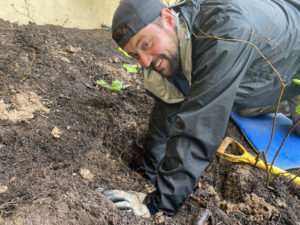Spring is the perfect season to prepare your automatic sprinkler system for effectively watering your lawn and landscape for another year. We suggest scheduling an irrigation inspection twice a year – before starting the system in the spring and shutting it down in the fall. The ideal time to schedule your spring checkup is in late winter, from January through March. Prepare your sprinkler system by following the steps below:
- Close the screws on the backflow preventer and cap the bleeder valves.
- Turn on the isolation valve and open the large valves on the backflow.
- Inspect the valves and backflow preventer.
- Run and test each zone manually, fixing any issues you find.
- Leave the controller/timer in the “RUN” or “ON” position and reprogram the automatic watering function.
Remember to check for any changes from the previous year, like new landscaping or changes in sunlight exposure. Adjust the zones accordingly to ensure optimal growth.
General Irrigation Check-Up
“How do I check my irrigation system?” It’s a common question we get each year when the rain stops falling and people realize their plants need water.
Turf and plants need water – some more than others. In Central Texas, the summers are commonly dry and hot requiring significant irrigation to keep our turf and plants healthy.
5 simple steps to get a handle on your system
Are you a checklist person? Probably…or why would you be here?
1. Prepare
- Get something to write on (pad of paper, kid’s homework, phone). You are going to write down information on each zone and issue as you go so that you don’t have to remember it all off the top of your head. We also recommend taking pictures throughout the process. Who hasn’t walked away from a situation and immediately forgotten the name, brand, or issue? Pictures are your friend.
- We recommend paper because you can leave this paper in the controller. When you come back weeks or months later, you don’t need to relearn the whole system. You have built yourself a primer.
- Acquire the proper beverage (preferably coffee, lemonade, or a beer/hard seltzer – depending on the time of day).
2. Initial run-through using the “LIT” method
- Start with the controller. Most systems installed in the last 25 years have an easily identifiable controller. You can either A) wing it and mess with the thing until you know how it works (or think you know) or B) watch a YouTube video on operating the controller – this is highly recommended.
- Run each zone for 2 -3 minutes. Start with zone 1 and go until you run out. As you run the zone, try to get eyes on the entirety of the area. Some systems are strangely designed and have part of the zone in the front yard and part in the back.
- Write down the LIT for each zone
- Location
- Issues (broken, non-optimal performance)
- Type (sprays, rotors, drip, Geiser, other)
- Hint: Listen carefully as the system runs. Often you will hear issues like buried heads or geysers before you see them.
3. Home Depot and Fixes
- Make sure you have the proper parts and tools to repair, optimize, or add to the system. This should take no more than 14 trips to the Home Depot. If you hit 15 trips then we recommend giving up for morale or making another stop at the gas station to refill your cooler.
- Remember that pictures are your friend. So is YouTube.
- Start with the biggest problems and then move to the little stuff. How many times have you started on a project expecting it to take an hour and it took three? You want to make sure you handle the most urgent issues in those first three hours.
4. Adjust the controller for the season
- This is hard to generalize. Each zone should be adjusted for its specific “microclimate”. Shaded areas need less water than areas in the sun. After the sun is hotter than the morning sun.
- Some rough notes: sprays usually put out about twice the amount of water as rotors (so they need less time). Drip is almost twice as efficient as either rotors or sprays but it puts out water slower.
5. Take a victory lap
- You are probably hot. Take a jog through each zone as it runs – hands above your head in a victory position.
- Also heavily consider a slip-n-slide or a trampoline for increased joy.
If you want to learn more about our team, please visit our team page here.
Here is a ridiculous video of some guys doing WWE in a Walmart. You are welcome.


